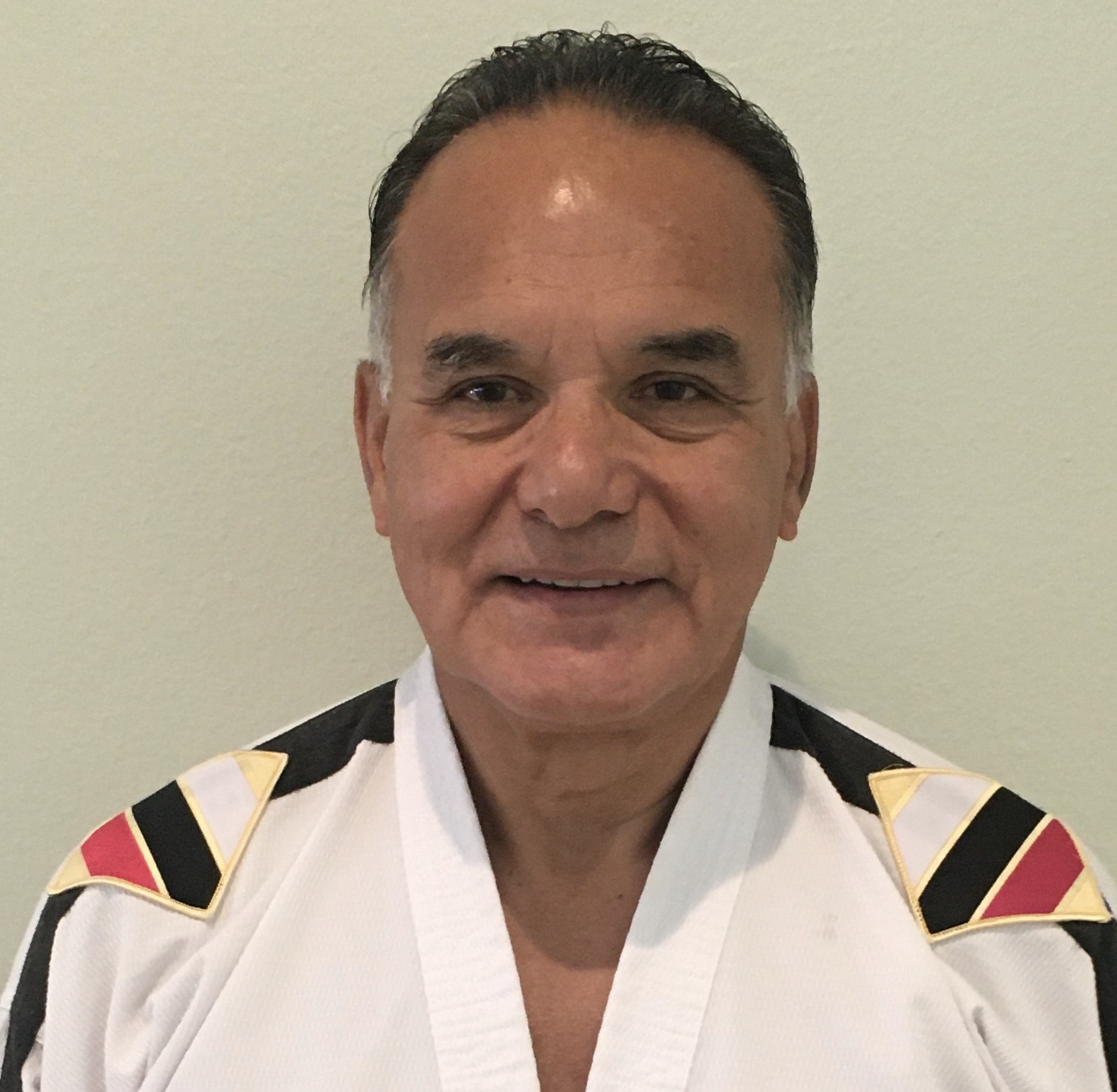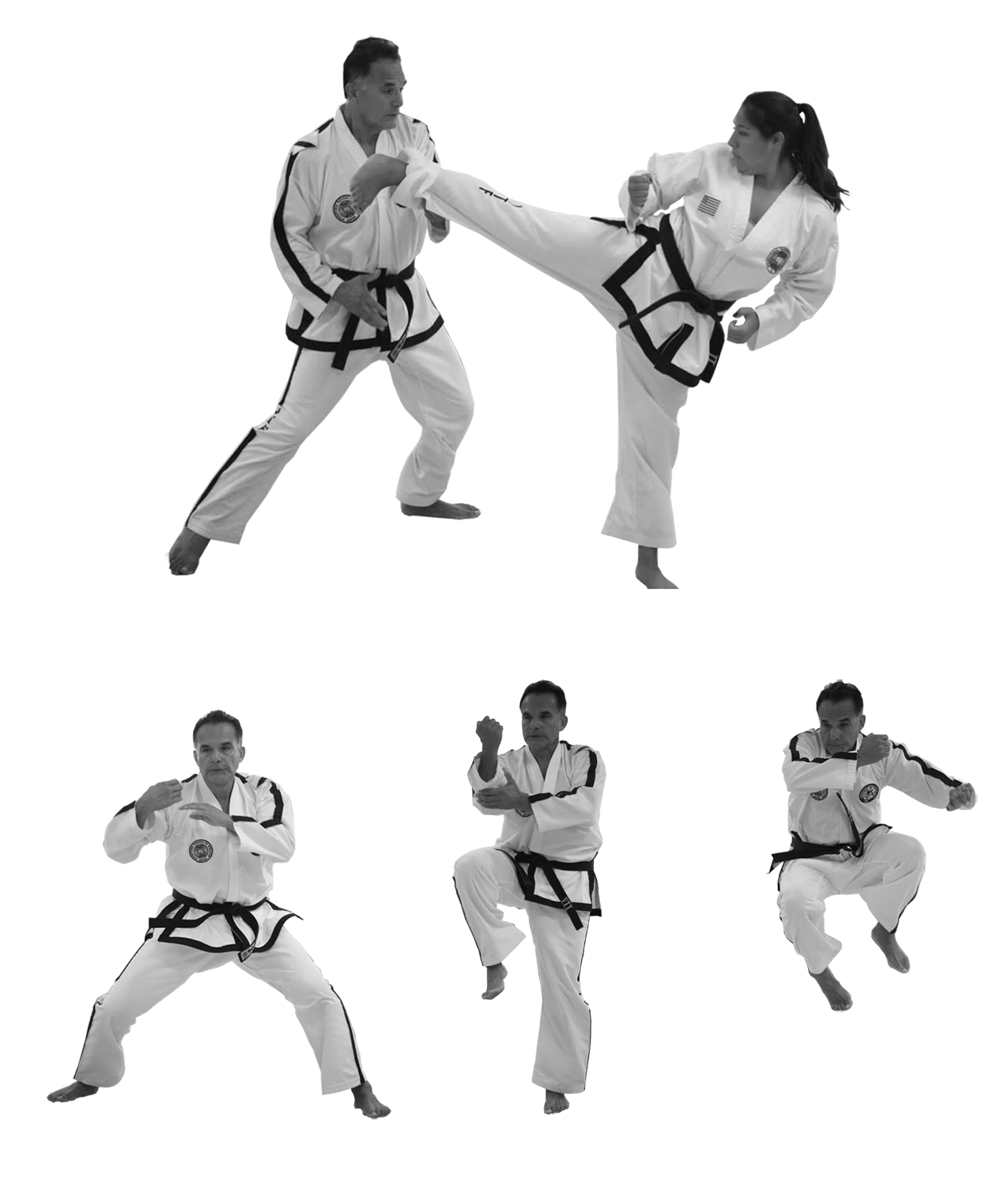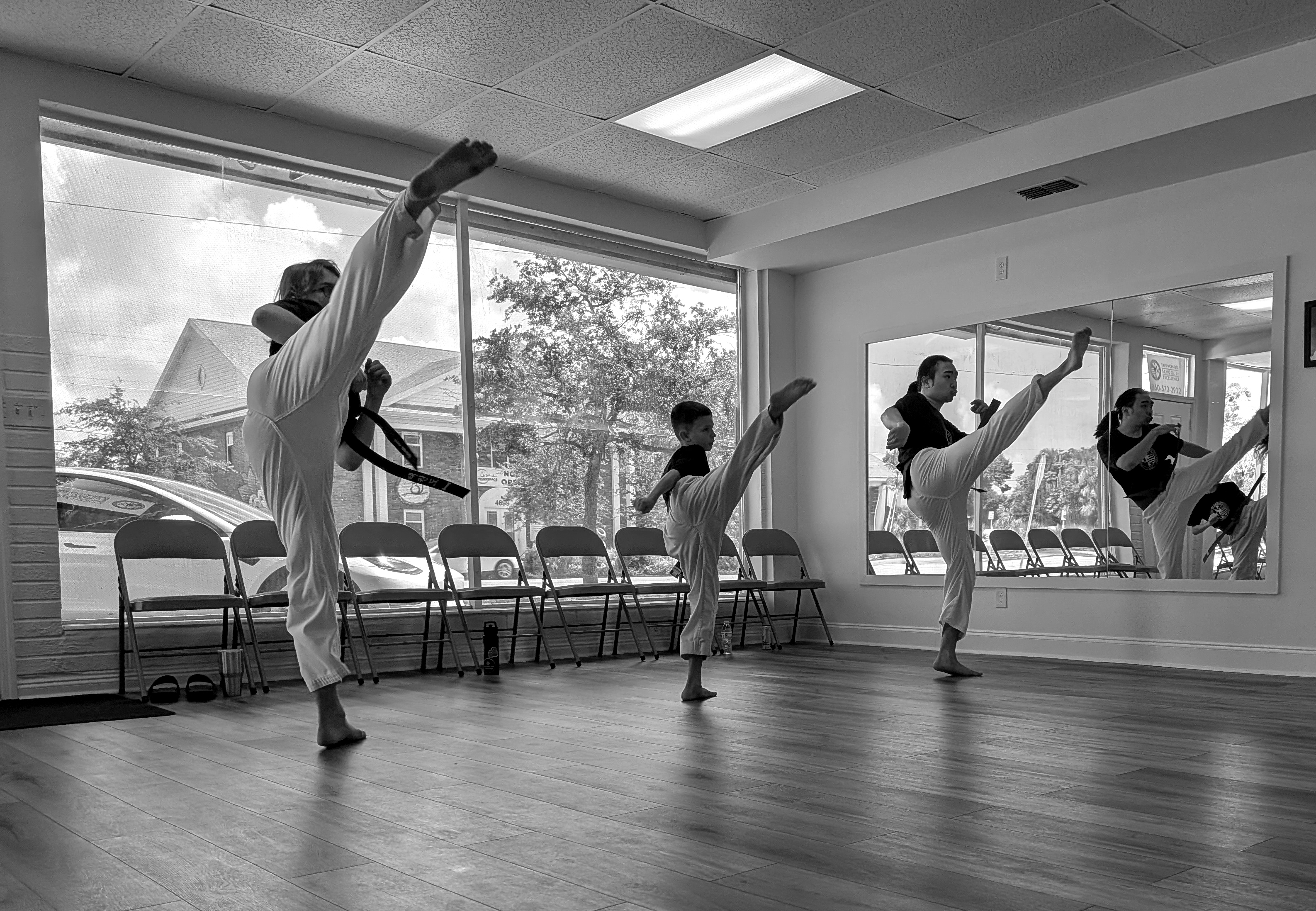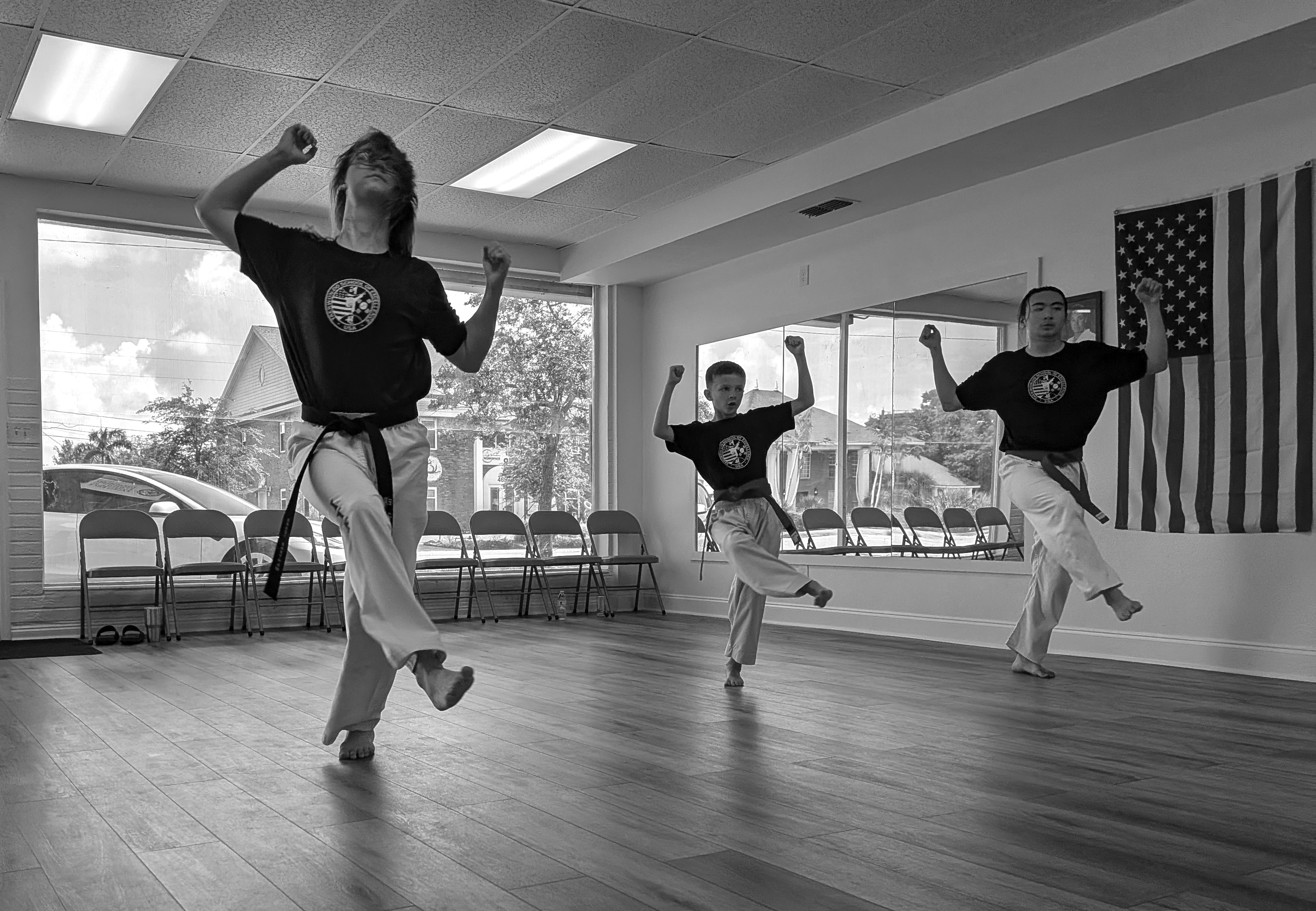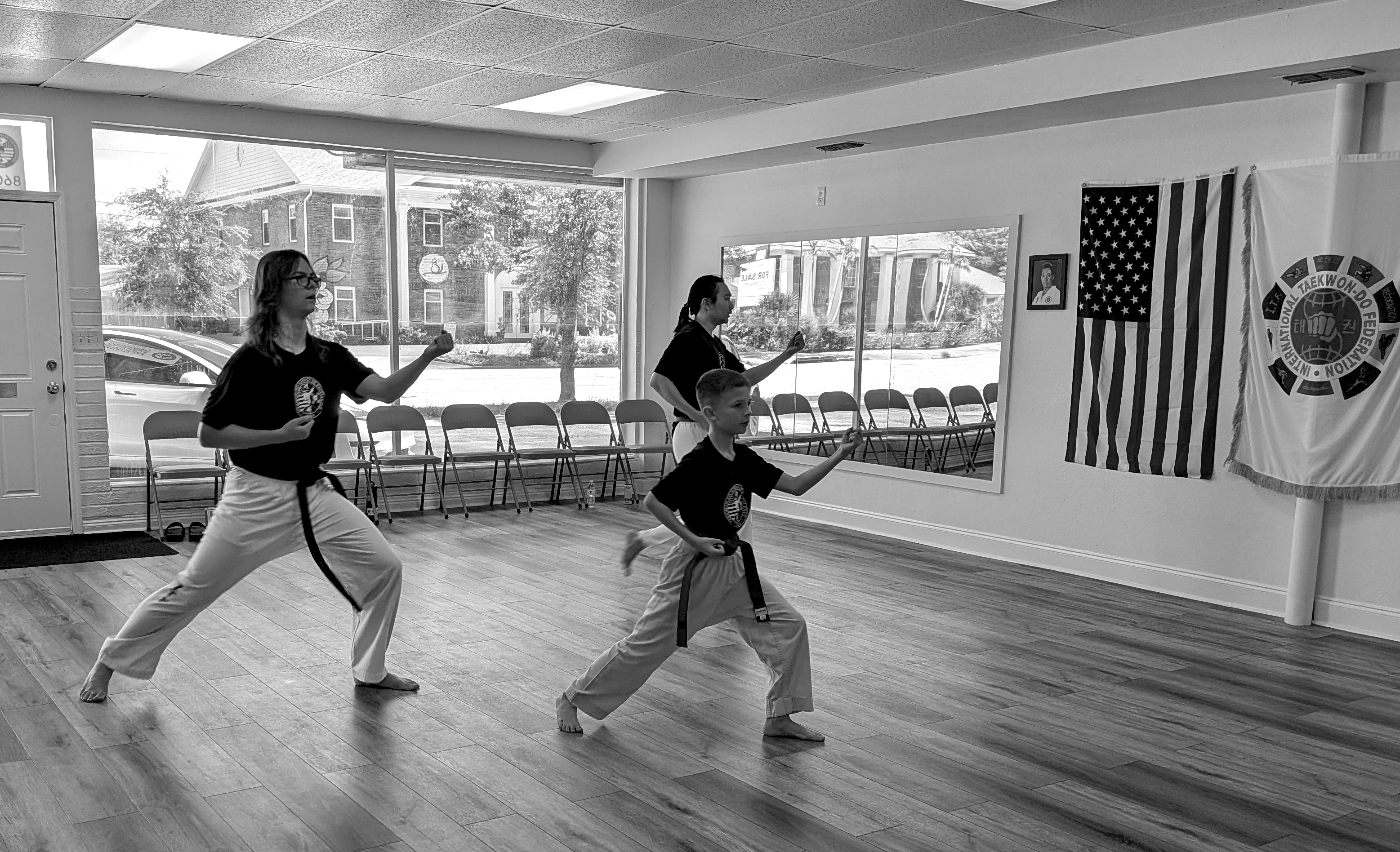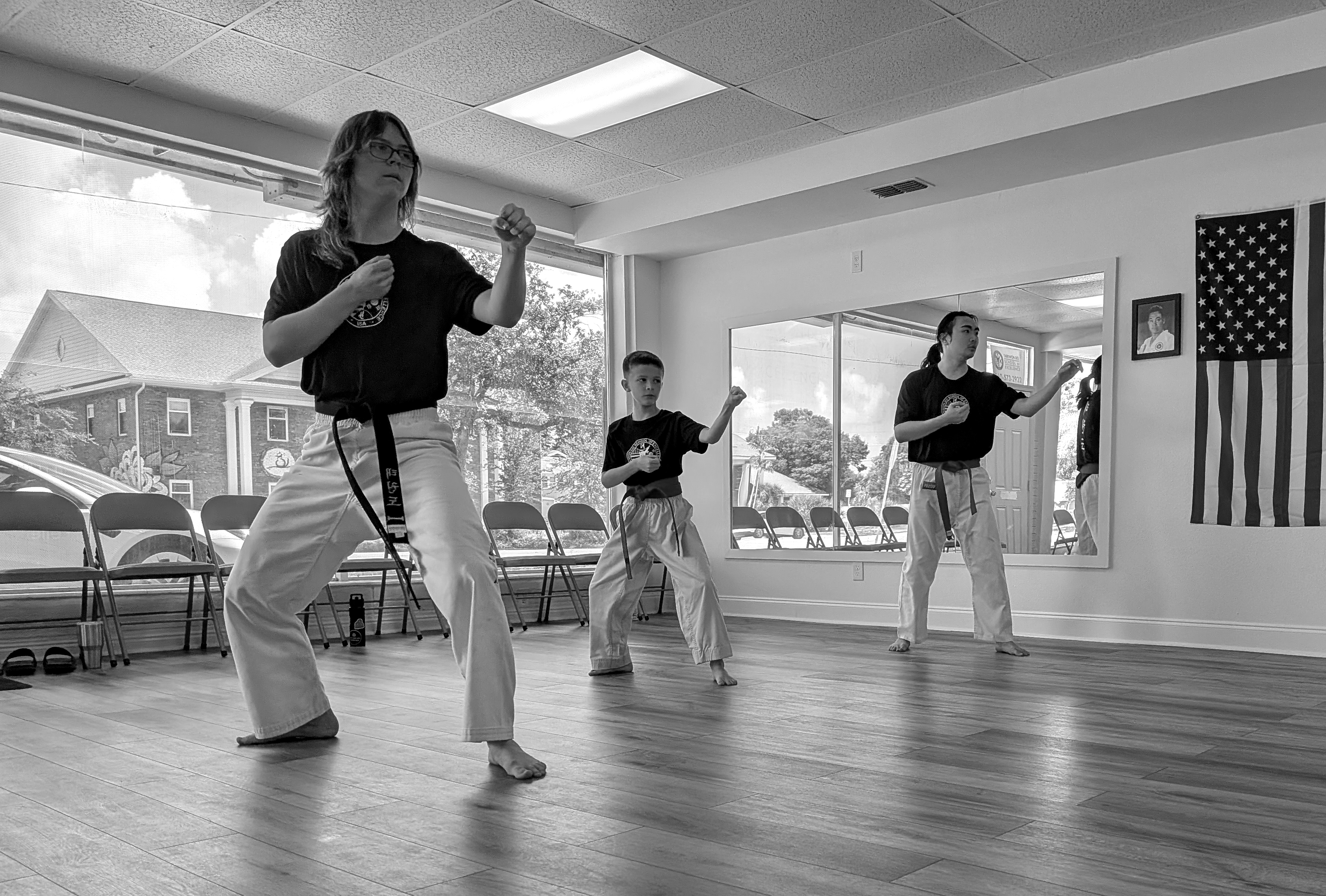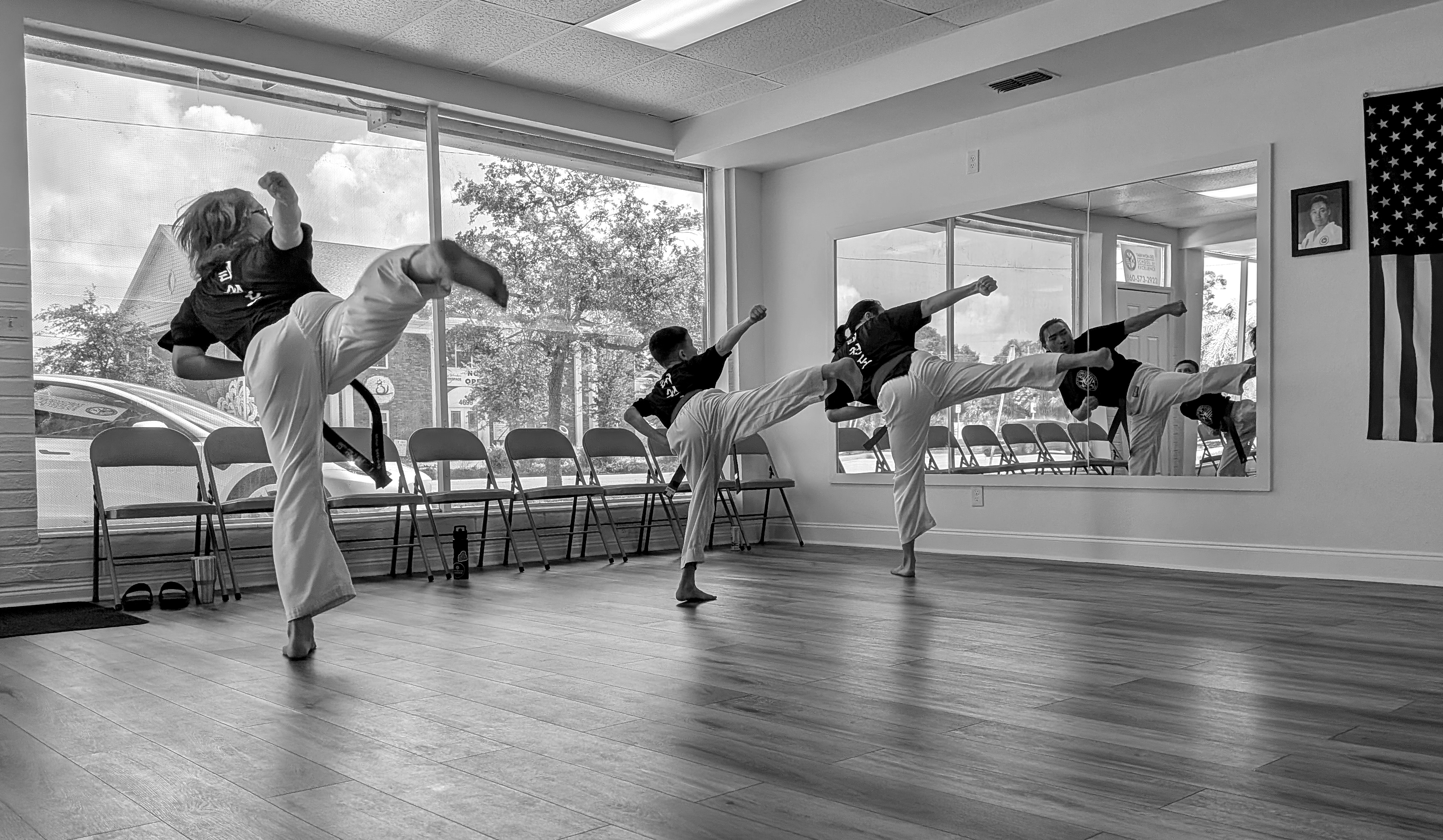Courtesy -
Politeness, respect, and good manners. Courtesy includes showing respect to instructors, seniors, and fellow students, and maintaining proper etiquette at all times.
Modesty -
A combination of courtesy and integrity. Being able to define
right and wrong and have the ability to act accordingly
towards others and in your training methods.
Perseverance
- Based on the oriental saying, "Patience leads to virtue or
merit." To achieve a higher degree of perfection of a
technique, one must set a goal, then constantly persevere.
Self-Control
- It is very important to practice self - control inside your
Taekwon-Do school and outside while conducting your personal
affairs.
Indomitable Spirit
- Not to be easily discouraged when you and your principles
are pitted against overwhelming odds.

